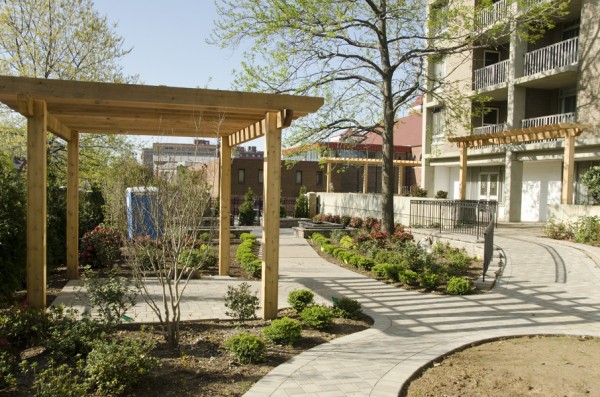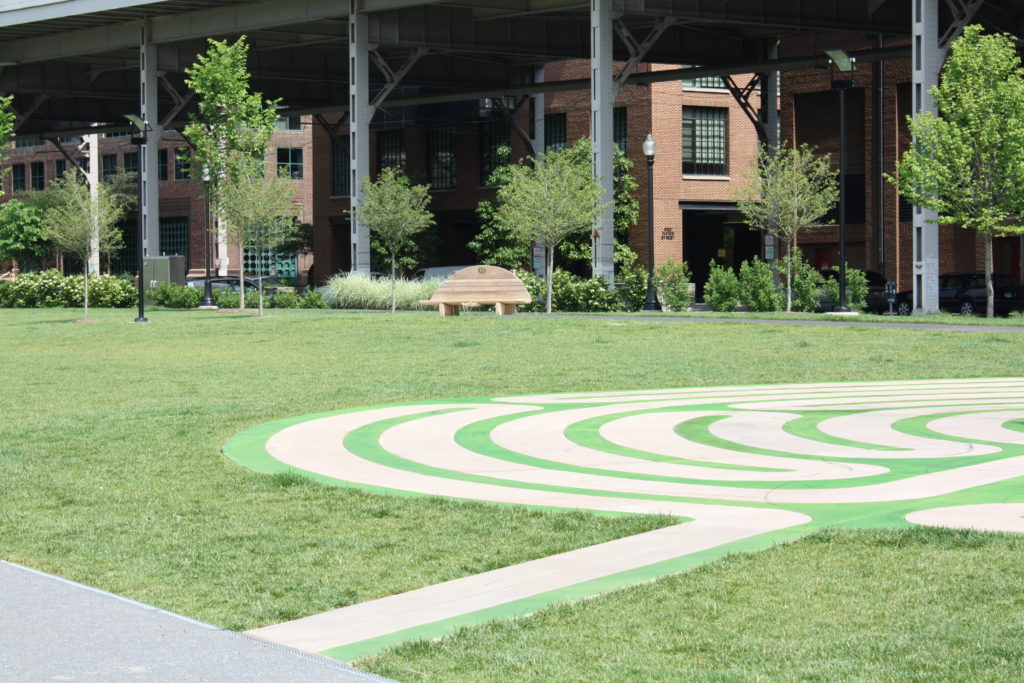Landscape architects incorporate Universal Design Principles into spaces to allow inclusive, accessible use. Adequate shade areas, seating, and easy to maneuver paths are some of the key elements of thoughtfully designed gardens. Community garden leaders, Firesouls, and others who may not have a design degree can create inclusive spaces using found materials and easily implemented ideas. Tailoring spaces according to community needs is essential.

“I have people who will say, ‘Can you just give us a checklist?’ And I say, ‘I can’t . Your community’s needs are going to be different then a community on the other side of town because your ethnography data is different. Who lives there is different. You may have a higher level of autism, so I may look at sensory pieces and not worry about ramping to the same degree (providing ADA compliance in this area). But if you’re next to a Paralympic training facility I’m going to make sure that I have wheelchair mobility access to everything I can get. So that I can create a space that is unique to your community and who will be there on a regular basis.’”
– Ingrid Kanics, an inclusive design consultant
Garden Design Possibilities
Vertical Planters. Plants grown vertically are easier to reach. Designs include hanging containers, upside down tomatoes, trellises, garden towers, or pulley-assisted racks. Creative solutions are endless.
Raised Garden Beds. These designs enable the gardener who uses a wheelchair or needs a seated position for balance or endurance. Garden boxes can be elevated on legs. Beds lined with sturdy railing create a seat for gardeners to work and rest.
Native Plants. Incorporating native plants decreases the need for daily watering or maintenance because the plant adapts to seasonal changes. Choosing plants that engage smell, sight, and touch are also important. A local native plant society is a low-cost option to find the right plants for a space.
Container Gardens. If space or mobility is limited, group several containers together to grow flowers, herbs or vegetables from patios, porches or window sills. A group of containers creates a sense of garden lushness.
Indoor Gardening Technology. More people are growing vegetables and greens inside their apartments due to hydroponic, lighting and ventilation technology. For those with limited mobility, an indoor growing option provides physical and mental stimulation.

Garden Tools
Self-Watering Containers. To cut down on too much labor from daily watering tasks, containers can be bought or constructed to self-water.
Personal Gear. Garden hats with wide brims, garden gloves to protect sensitive skin, convenient portable stools, knee pads, and ergonomic garden tools are some of the items to consider purchasing or providing.
Funding Accessible Gardens
Finding the financing for community projects, especially if a design consultant is required, can be challenging. Fortunately, there are a number of organizations looking to help community groups improve their neighborhoods, often on a very small, localized scale. Many of these organizations will even walk applicants through the process and put help put the applicant in the best possible position to receive the award. In December we shared information on five grants that can be used to help develop greenspace in your community.

